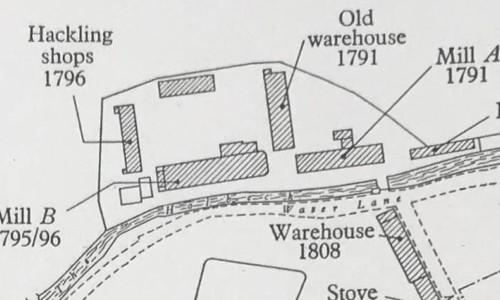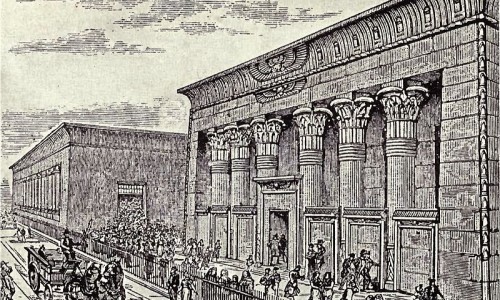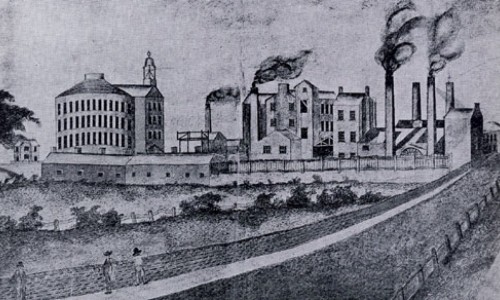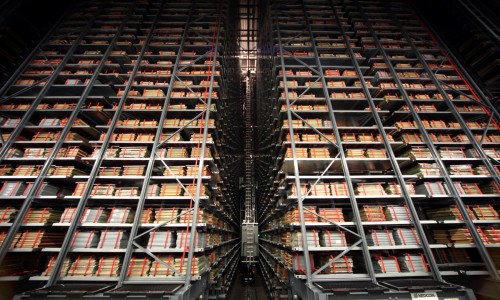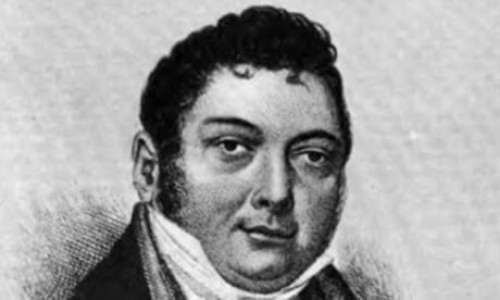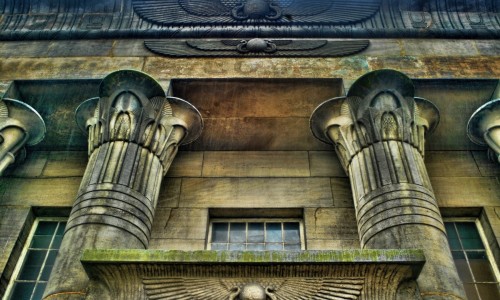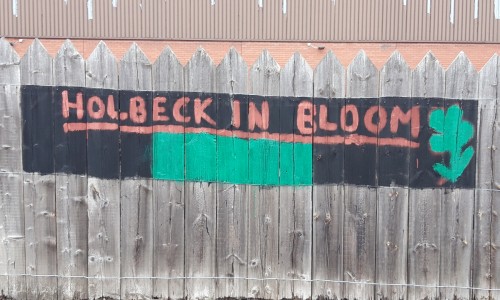Yorkshire’s Next Generation of Textile Brilliance – the story of the Temple Weave
September 10, 2020

As we look back through history, we peel away the layers and everything is revealed. Except that the full harvest of some of the rudimentary practices from our industrial evolution aren’t always immediately evident to the 21st century eye. Intrigue should always play a part in how we imagine and discover all our yesterdays, and there is so much still to discover, otherwise our hunger for history would be satiated and we could firmly close the book on the past. And that is why a recent discovery at a famous Yorkshire mill has opened up a fascinating portal into this region’s rich textile heritage, whilst also enabling a journey into an arresting and innovative future.
It was whilst working on a Future Fashion Factory-funded project with Yorkshire Textiles - in collaboration with Royal Warrant holder AW Hainsworth, established in Leeds over 230 yrs ago, and textile designer Rebecca Ough - that the discovery was made at Armley Mills Leeds Industrial Museum of jacquard loom punch card patterns. Armley Mills was once the world’s largest woollen mill and today, as Leeds Industrial Museum run by Leeds City Council, houses examples of textile manufacturing that span much of the region’s Industrial Revolution.
Rebecca Ough, together with Yorkshire Textiles - an alliance of people and organisations dedicated to the promotion of textiles, quality fashion, innovation and skills in the Leeds City Region, led by Suzy Shepherd – has now embarked on a new project with CEG’s Temple development in Holbeck, Leeds which perfectly adopts its masterplan vision for capturing the past, present and future of the city’s industry.
The punch cards which were discovered had been used for textile production in the early 1900s, but nobody knew what pattern they had produced. These cards were an early form of binary code, and were effectively the first form of modern day computers, as they transmitted the code from these unwieldy plates to weaving machines, which would interpret them and produce a pattern in cloth.
(WATCH: Rebecca Ough explains the process behind the Yorkshire Textiles 'Heritage Weave' project)
As part of the Yorkshire Textiles project, Rebecca translated the cards into a pattern. It was something of a voyage of discovery for Rebecca, even though she possesses a vast technological knowledge of textile techniques both old and new, and is practised in updating these methods to embrace modern technologies and reduce waste. She knew what the cards were for, but not what pattern they would produce, so she meticulously digitised the process and interpreted the information on the cards to reveal a pattern designed over 100 years ago.
“Armley Mill/Leeds Industrial Museum provides a great insight into weaving practices of the past,” Rebecca begins “some which are still used in the industry today. They have a working spinning mule along with punch card operated Jacquard looms.”

(Photo credit: Future Fashion Factory - the jacquard loom punch cards alongside the textile weave produced for the previous Yorkshire Textiles project)
Immediately we have a window into the past, but we are not merely historical bystanders, we can now actively take part and touch the bygone era when Yorkshire’s textiles were established as world leaders. Although today the volume of manufacturing is no longer on such a vast scale, the reputation and modern day relevance to the international market has stood the test of time, in terms of luxury and innovative textiles. And it is this passion for adapting classic techniques for use in the hectic maelstrom of contemporary life that makes this region so relentlessly challenging and boundary-shifting.
With the Temple development so inherently enveloped in the epoch-defining textile history of Leeds, it was a natural step to utilise this digitisation of traditional techniques to perfectly embody an identity which richly cherishes its past and looks forward to a bright and progressive future. As such, following a brainstorming session with Suzy Shepherd, CEG has commissioned Yorkshire Textiles and Rebecca Ough to use these newly-refined techniques and this cross-translation of traditional skills to produce a ‘heritage weave’, which will be used across the Temple development to bring its textile legacy back to life and remind the reformist pacesetters of today what happened here first.
The ‘Temple Weave’ has been hand-woven by Rebecca using these digitised techniques, and the design has used palette colours inspired by the Egyptian Revival style, as a homage to the charm and mystique of the wonderful Temple Works; the anchor component of the Temple development. Rebecca has gone to painstaking lengths to find yarns that match the red, pink and brown palette colours put together by Thompson Brand Partners for the Temple branding guidelines, and has reversed the binary card process to ‘un-digitalise’ a design, and having unpicked it, to allow the production of beautiful woven samples.

(Photo credit: Rebecca Ough - Producing the Temple Weave)
“My design process always starts with manually drawing out weaving structures,” Rebecca continues “I took inspiration from the digital imagery which CEG provided me, and translated these into woven designs on my CAD software. Selecting materials is the next stage, and one of the most important, in my design process; I took inspiration from Temple Works’ interesting history in flax spinning and included flax fibre in the form of linen for the weft, and a worsted wool yarn in the warp. Making hand woven samples is the final realisation of designs, it’s a great chance to test out different materials and weaving patterns and it provides a really tactile outcome. This can then be scaled up to be larger hand woven pieces, or can be taken to be manufactured at one of the many textile mills in the area.”
As it stands, Rebecca has produced a number of samples using her own loom to replicate the ‘Temple’ pattern. The idea is for Rebecca to ‘scale-up’ the samples by hand-weaving them to full-sized pieces of artwork. There are a multitude of potential further uses for the final pieces as upholstery fabrics and other interior fabrics, as well as large-scale artworks across the various buildings and areas of public realm within the Temple district.
First and foremost, however, this is an exciting and innovative way of bringing traditional weaving methods into the 21st century and making them available for further development. “This process directly relates to traditional weaving methods,” Rebecca explains “machinery and technology may have advanced, but the fundamentals of weaving remain unchanged. The warp yarns still interlace with the weft yarns in the same way as they always have. Weaving has become more efficient with the use of digital technology but the concept and the craftsmanship of weaving will always be significant.”
Matching the “Egyptian” palette colours accurately was a huge test and indeed, other colours had to be added. This was not the only test of Rebecca’s skills however, and a further tribute to Temple Works and John Marshall’s contribution to industrial development in Leeds was another meticulous task: “One of the main challenges I encountered with the creation of the Temple Weave,” Rebecca explains “was the use of linen yarn. Linen can be a difficult yarn to work with because it has a relatively low extension, it can be quite unforgiving when weaving! I overcame this with the use of wool in the warp.”

(Photo credit: Rebecca Ough - Yarns used for the Temple Weave)
The project has been part-funded by CEG with Yorkshire Textiles and is another example of how the Temple development reflects and pays tribute to the heritage, innovation and creativity that has been present in, and has shaped, the area for over 200 years. The wool and linen Temple Weave is the fabric of Leeds’s and the city region’s textile heritage in microcosm, woven in the colours which represent part of a new economic future in the Temple District.
For Rebecca, the project also represented a personal journey of sorts, given her background and family history. “Being from Bradford, I’m constantly reminded of our textile heritage, whether that’s through relatives who’ve worked at mills, the dominant physical presence of mills throughout the district or through my work at AW Hainsworth; a modern manufacturing mill but with a lineage spanning over 200 years. I feel very much rooted in the culture of textiles and I hope aspects of this are reflected in my work.”
Rebecca is a great example of how modern developments can utilise local, existing talent to bring a human element that is not always at the forefront when people see ‘developments’ simply as disaffected contemporary construction taking over a traditional landscape.
“I studied textile design at Manchester School of art where I graduated in 2015 having specialised in woven textiles. I now run my own business Salt Weave Studio – located near the World Heritage Site of Saltaire, in Shipley, West Yorkshire - where I work on specialist design commissions along with producing my own range of fabrics.”

(Photo credit: Rebecca Ough)
In addition to this, Rebecca’s technical experience is a vital link in this efficient transition and communication of traditional techniques, which she can develop through her own business and collaborations with Yorkshire Textiles and others.
Underpinning development though, is the need for organic growth, and utilising Rebecca’s skills is not just a homage to the original use of Temple Works and some of the many mills that proliferated the area, but it provides continuity to a new generation of accomplished, talented and energetic people. Passing on knowledge and expertise is vital in keeping any industry alive, and doing it with fresh ideas and in a more thoughtful, resourceful and sustainable manner pays tribute to the industry which built Leeds, and offers it a fighting chance of not just surviving, but flourishing in its traditional Yorkshire heartland.
And ultimately, for any development to be successful, you need people to bring the place-making alive. Temple is looking to re-purpose and celebrate what is around it, providing a new landscape to sympathetically reside amongst those cherished buildings. ‘Temple Weave’ and the story behind it, particularly how it has provided a conduit between the old and the new, is an example of why people and their energy and ideas are so important. Temple will provide an attractive platform for this and other industries to thrive.
(Header Image: Photo credit - Rebecca Ough - Samples of the Temple Weave)

.jpg&w=500&h=300)
